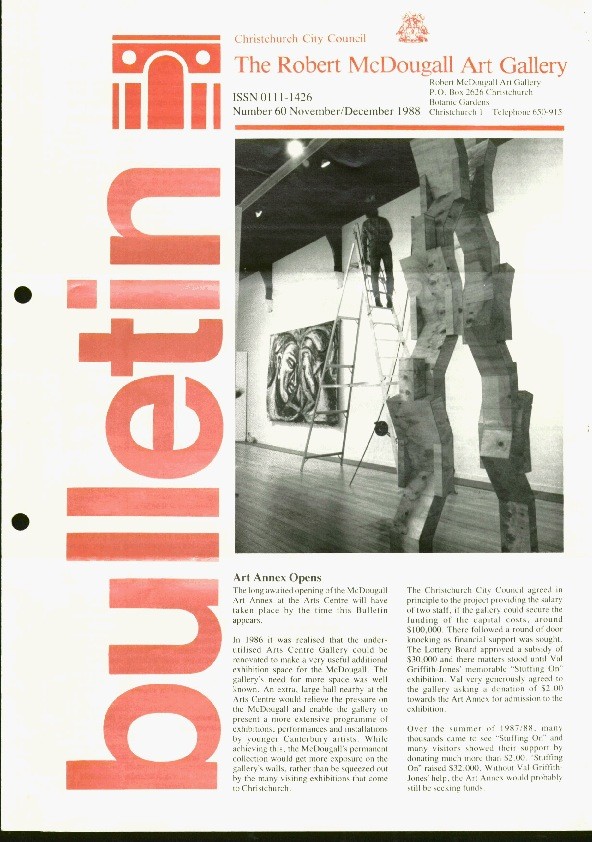This exhibition is now closed
Alexander Rodchenko (1891-1956) is best known as a leading figure in the Russian avant garde of the early 20th century and as the pioneer of Constructivist design. This exhibition of 61 photographs, two of them vintage and the remainder prints made directly from Rodchenko's negatives, is from the Museum of Modern Art, Oxford. It is toured by the N.Z.A.G.D.C. with the sponsorship of the Queen Elizabeth II Arts Council and following its New Zealand tour will move on to Sydney.
Rodchenko was a 'revolutionary' associating with young Russian artists, poets, writers and musicians in a search for new forms and means of expression to match the changed realities of post revolutionary Russia. As an artist in a period of unprecedented social change Rodchenko, in 1921, signed a manifesto declaring easel painting obsolete. Artists were called on to act as catalysts for social change and to produce art works readily accessible to the masses.
Photography was ready to play this role. Beginning in 1839 with the discovery of the process itself photography had, by the 1920s, stopped trying to simulate drawing and begun to explore new imagery and techniques appropriate to the modern world. In this Alexander Rodchcnko was highly influential.
The earliest photographs in this show date from 1921 when he, like most beginners, was using as models his family, friends and acquaintances. Later, working on the magazine LEF, Rodchenko photographed writers and poets and collaborated with Mayakowsky on images for his lyrical poem Pro Eto. It was at this stage that Rodchenko began to use the dynamic, angled viewpoint and the photomontages for which he is famous. After 1924, however, Stalin's 5 Year Plan forced Russian artists into anecdotal propagandist styles. Art was expected not to 'reflect' but to 'serve' the Revolution. As one of Stalin's photographic reporters Rodchenko coined the term 'factography' for the pylons, sawmills, the White Sea Canal and the athletes on parade produced in this period.
The most recent photograph in this exhibition is most fittingly 'Circus' of 1940. By then Social Realism had been proclaimed the official art style of the Soviet Union and Rodchenko had resumed painting. choosing as his subject the Russian circus. Living in relative obscurity in Moscow. Rodchenko continued with his painting, photomontages and other projects until his death in 1956.
('Rodchenko as Photographer', Bulletin, No.60, November/December 1988, pp.2-3)
-
Date:
17 November – 11 December 1988 -
Location:
Robert McDougall Art Gallery - main gallery -
Exhibition number:
414
